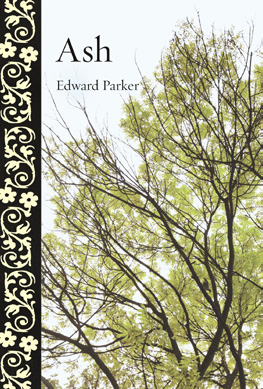From Living Woods issue 61
The ash tree has played a critical part in civilisations across the world for millennia. It has been used in tool-making and the production of medicines, and has an important place in the folklore of many cultural traditions. JOHN CAMERON reviews an absorbing book.

ASH
EDWARD PARKER
Reaktion
Hardback
216 pages
RRP £16
ISBN 9781789143560
The first impression of Ash, by Edward Parker, is the exceptional quality of its production. From very first handling, the extremely pleasing feel is immediately apparent, and this continues throughout, from the quality of the printed page to the many and varied, super-glossy photographs and drawings. It’s a cliché about ‘books and covers’, but in this instance the reader really will not be disappointed. It is a joy to just hold the book! The fact that it is also an easy and absorbing read is a plus.
Edward Parker is director of the Springhead Trust in Dorset, and the author of several tree-related books. This is one of several botanical writings in a series by Reaktion Books. Ash brings together a broad and varied perspective of this most prolific of trees, with abundant stories, fascinating facts and scientific research into fraxinus from around the globe.
The author takes the reader on a journey through history, beginning with the first fossils of the species dated at over 35 million years old, through to more recent periods in human history when the ash started to be valued and utilised by varied civilisations. The utility of ash can be traced right through to the 21st century.
Having begun its evolutionary journey in North America, ash species took advantage of various geological events that allowed the trees to strike out into Asia and beyond. Considering the far-reaching extent of ash, folklore and mythical stories abound across its range. Celtic belief held strong that the ash was a conduit for good and bad powers, probably as the ash attracts more lightning strikes than other species. This is largely due to the general prevalence of tap roots penetrating deep into the water table and therefore ensuring that ash trees are well grounded. In North America, the Wabanaki believe that humans were first created from the black ash, while in Scandinavia, Norse mythology and tradition places the ash tree at the very heart of the celestial organisation.
Probably the main reason for the enduring interest in ash is its pure usefulness as an abundant woody material, as well as its medicinal uses. History chronicles the use of ash in Egyptian chariots, Greek weaponry and the chassis of carts, motor vehicles and aircraft. The steaming of ash, to bend and contort it, illustrates another prized quality of the timber. European warfare capitalised on the straight and strong grain of the ash for the production of both spears and arrows, but happily these qualities have also been optimised in the design and manufacture of hand tools. These hand tools have then been utilised in the further working and refinement of other timber products.
Medicinally, the ash has had a noted history for over 2,000 years: in ancient times Hippocrates and Pliny the Elder both recorded its use. More recent is its use in Chinese medicine, as well across North America, from treating snake bites to its use as an anticoagulant. Very recent research is pointing the way toward the treatment of complex conditions such as Parkinson’s Disease and Alzheimer’s.
For all of the success of ash over millions of years, it is now facing new challenges, with threats such as ash die back and emerald ash borer beetle. Perhaps human concepts of time give added tragedy to the threats posed to one of our most common landscape tree species. Time will ultimately tell whether the enduring ash can evolve, adapt, survive, and continue its immeasurable contribution to Planet Earth for another 35 million years.